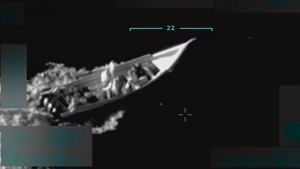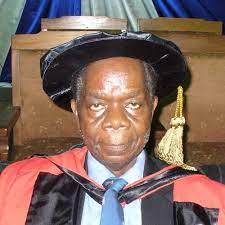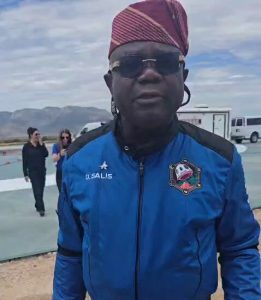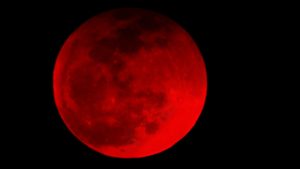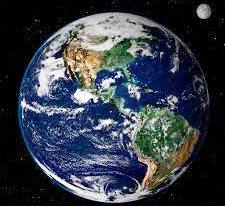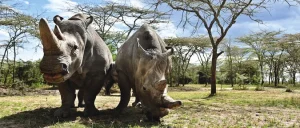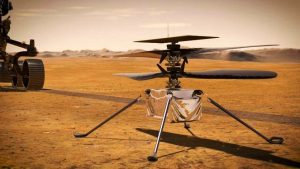China’s astronauts in the Shenzhou-14 mission to their space station, Tianhe, have returned to Earth.
The astronauts are: Chen Dong as Commander, Liu Yang and Cai Xuzhe.

They touched down in the Gobi desert in northern China by 13:10 WAT on 4 December, 2022.
They spent six months in Tianhe and handed over to Shenzhou-15 astronauts who were launched to Tianhe on 29 November, 2022 before returning.
CHINA LAUNCHES SHENZHOU-15 TO TIANHE
China launched Shenzhou-15 astronauts to Tianhe, its space station, on 29 November, 2022.
The three astronauts are: Fei Junlong, Deng Qingming and Zhang Lu.
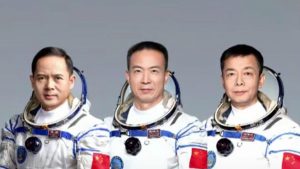
They were launched from the Jiuquan Satellite Launch Centre.
They will stay in Tianhe for six months.
CHINA LAUNCHES SHENZHOU-14 ASTRONAUTS TO TIANHE
China has launched three astronauts to Tianhe, the main module of Tiangong, its orbital station under construction.
The launch was atop a Long March 2F rocket from the Jiuquan Satellite Launch Centre by 03:44 WAT, 5 June, 2022.
The capsule docked about seven hours later.
The astronauts are all 43 years old and are: Chen Dong as Commander; first Chinese female astronaut, Liu Yang and newcomer, Cai Xuzhe.

Liu was a member of the Shenzhou-9 mission of 16 June, 2012 and spent 12 days in space while Chen was a member of Shenzhou-11 in 2016.
They will oversee the installation of the two proposed laboratory modules of Tiangong, China’s space station under construction.
Tianhe is its main core. The laboratory modules are Wentian and Mengtian.
Wentian was launched on 24 July, 2022 and Mengtian in October, both uncrewed.
Chen Dong, Liu Yang and Cai Xuzhe in Shenzhou-14 are the third crewed mission to Tianhe.
They will spend six months in space.
Their mission will kick-off permanent habitation of Tiangong and in-person handover to subsequent astronaut missions.
SHENZHOU-13 ASTRONAUTS RETURN TO EARTH
China’s Shenzhou-13 astronauts: Zhai Zhigang, 55, Mission Commander; Wang Yaping and Ye Guangfu, both 41, returned to Earth on 16 April, 2022.
They landed in the Gobi desert, northwestern China, and were picked up by a waiting team.
They smiled and waved at the cameras, signifying that they are in good condition.
They were launched to the Core of China’s Space Station, Tianhe, on 15 October, 2021 on a Long March-2F rocket from the Jiuquan Satellite Launch Centre.
They spent six months in Tianhe.
It is the second batch of astronauts to the station which is due to be completed by the end of 2022.
The first batch, Shenzhou-12, had three astronauts in Tianhe for three months.
Shenzhou-14 will be launched to Tianhe on 5 June, 2022.
SHENZHOU-13 STARTS SIX MONTHS MISSION IN TIANHE
China has launched three astronauts in a spacecraft, Shenzhou-13, to Tianhe, the Core Module of her space station which is still undergoing construction, but habitable.
Lift-off was by 17:23 WAT, 15 October, 2021 on a Long March-2F rocket from the Jiuquan Satellite Launch Centre in Gobi Desert, northwestern China.
They docked six and half hours later and will stay in Tianhe for six months.
The Shenzhou-13 spacecraft has Zhai Zhigang, 55, as Mission Commander, Wang Yaping and Ye Guangfu, both 41.
It is the second batch of astronauts to the station which is due to be completed by the end of 2022.
The first batch, Shenzhou-12, had three astronauts in Tianhe for three months (June to September, 2021).
It is Zhai and Wang’s second space mission and Ye’s first.
Wang is the first female astronaut to visit Tianhe.
On 8 November, 2021 she became the first woman in Chinese history to do a spacewalk when she worked for six hours with Zhai to install some equipment and test the station’s robotic arm.
China’s Shenzhou-12 astronauts return to Earth
China’s Shenzhou-12 astronauts have returned to Earth after three months aboard the Core module of her Space Station, Tianhe.

The taikonauts, as China sometimes refers to her astronauts: Nie Haisheng, Liu Boming and Tang Hongbo, touched down in the Gobi desert in Inner Mongolia by 06:35 WAT on 17 September, 2021.
China made the most of publicity with the three in the Core module of her Space Station, Tianhe.
Two of them, Liu Boming and Tang Hongbo, were shown climbing outside and doing spacewalk on 4 July, 2021.
They described the Earth as very beautiful and very bright to the applause of the Ground Station.
For almost seven hours, using a 15m (50 feet) robotic arm for assistance, they set-up cameras and other equipment outside Tianhe.
The newly installed cameras have already captured stunning pictures of the Earth rotating below.
The installations outside a space station were not China’s first; Liu was in Shenzhou-7 in 2008 and even assisted when Zhai Zhigang did China’s first spacewalk.
Earlier, CCTV, the state-controlled media, showed the taikonauts saluting and greeting the Communist Party of China, CPC, on the eve of its 100th anniversary.
The CPC centenary on 1 July, 2021 was marked with elaborate fanfare and parade in China.
Also, President Xi Jinping was televised on 23 June, 2021 talking to the three taikonauts in Tianhe for seven minutes, sending his “sincere greetings.”
Addressing them as comrades, he asked how life is with them in space.
“Thank you for your hard work,” he concluded.
All three said they were doing fine.
One of them, Nei Haisheng, said this is his third time in space and the conditions are much better now than in his previous missions.
Nie, 56 years old, an Air Force fighter pilot, was the Mission Commander and China’s oldest astronaut in space.
One of his two earlier missions to space was for 15 days in the now de-orbited prototype space station, Tiangong-1, in 2013.
The other astronaut, Liu Boming, who was in space for the second time, said it is a “supreme honour to serve our motherland.”
Liu, 54, an Air Force officer too, was aboard the Shenzhou-7 mission in 2008 in which he took part in China’s first spacewalk.
The third, Tang Hongbo, 45, also from the Air Force, in space for the first time, said he has fully adapted to micro-gravity conditions in Tianhe and assured President Jinping that “we will meticulously carry out all our tasks.”
About one month later, the three were shown taking blood samples of each other to confirm their health status.
Chinese state media, CCTV, said there were 120 different types of food in Tianhe for the astronauts.
China launched the three astronauts to the Core Module of its space station, Tianhe, on 17 June, 2021 (02: 22 WAT).
They docked about seven hours after launch and the Chinese authorities declared the mission a huge success.
Three hours after docking, they entered inside Tianhe.
The launch with a Shenzhou-12 spacecraft using Long March-2F Y12 rocket from the Jiuquan Satellite Launch Centre, northwest China, is the third of 11 missions to complete the 70-tonne Tianhe Space Station in late 2022.

photo credit: bigworldtale
The astronauts: Tang Hongbo, Nie Haisheng and Liu Boming.
The Core Module of Tianhe was launched on 29 April, 2021 using a Long March-5B rocket.
The spent shell of that 21-tonne (46,000 lbs) rocket made an uncontrolled re-entry into Earth, crashing into the Indian Ocean, off Maldives, on 9 May, 2021.
Due to the global anxiety over the possible crash site then, China postponed another launch to send cargo to Tianhe with the Long March-5B rocket.
That was later made using the smaller Long March-7 Y3 rocket carrying the uncrewed Tianzhou spacecraft with 6.6 tonnes of supplies, including food and equipment, to Tianhe on 29 May, 2021.
The supplies were sent ahead for the three astronauts who are the first Chinese in space since 2016.
Tianzhou was still docked in Tianhe and the astronauts’ first task was unpacking the supplies before starting some maintenance work and setting up the station.
The astronauts stay in Tianhe for three months is the longest Chinese astronauts have stayed in space.
EARLIER POST: NEXT LONG MARCH-5B ROCKET LAUNCH POSTPONED
China has launched an automated spacecraft, Tianzou-2, carrying supplies to its space station, Tianhe.
The spacecraft, launched a day earlier using the smaller Long March-7 Y3 rocket, docked on 30 May, 2021.
Long March-7 has a maximum payload capacity of 14 tonnes into a Low Earth orbit.
Chinese state officials gave the exact location of impact as longitude 72.47 degrees east and latitude 2.65 degrees north.
Much of the debris burnt up on re-entry into the Earth’s atmosphere.
There were concerns over the possible place of impact of the debris from the Long March 5B rocket that successfully launched the Core module of China’s planned Space Station, Tianhe, on 29 April, 2021.
Ten more of such missions are needed to complete the Space Station in late 2022.
The 21-tonne (46,000 lbs) launcher, travelling at 28,000 kilometres/hour (17,324 miles/hr) or seven miles/second,, entered low-Earth orbit and was bound for an uncontrolled re-entry into the Earth.
It was difficult for scientists to say where the point of impact on Earth would be then, due to its high speed.
The estimated date was 8 May, 2021.
A precise location was calculated as it edged closer to Earth; pulled by gravity.
By 8 May, 2021 scientists had a clearer picture of its position and predicted Sunday, 9 May, 2021, 05:19 WAT (+ or – 8 hours) as the time it will crash on Earth.
The predicted position of the crash was the southern Pacific Ocean.
In May, 2020 China’s 18-tonne first Long March 5B launcher had an uncontrolled re-entry and passed over US into the Atlantic Ocean, off West Africa, damaging several buildings in Ivory Coast, but no injuries were reported.
China’s first experimental space station, Tiangong-1, crashed, uncontrolled, into the southern Pacific Ocean in 2016 after Beijing confirmed it had lost control of it.
There was also the uncontrolled re-entry of the 19.8-tonne derelict Soviet space station, Salyut 7, which burnt-up over Argentina in 1991.
There is a good chance of such debris hitting the ground and causing damage but, oceans make up 70% of the Earth and it is likely that such debris will crash into the ocean.
Scientists however, were not taking chances and tracked the movement of the debris of the latest 21-tonne Long March rocket launcher in orbit.
The worst such case was the 76-tonne Skylab, owned by NASA, which had an uncontrolled re-entry; crashing into the Indian Ocean and parts of western Australia in 1979.
Some scientists are wandering why China did not plan a controlled re-entry for such a huge object because of its potential to cause serious damage on the ground.
The White House condemned China’s “irresponsible space behaviours.”
As a rule, objects over 10 tonnes are now guided in a controlled re-entry as a safety measure.
photo credit: space, telegraph, cgtn


